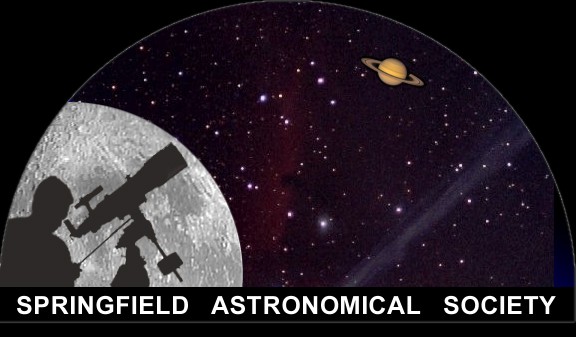
Patrick Holland
5/2/2014 3:26:36 PM
The Sun, imaged on 5-2-14. Taken with the Lunt LS60TDS, Grasshopper 3 camera and GEM mount. 124 frames used. Images stacked in Registax 6.1 and processed in Photoshop CS3.
| 
Jim Aldrich
4/27/2014 3:40:37 PM
NGC 4567 & 4568 are two merging galaxies in the Virgo Cluster. The "Siamese Twins" are ~60 mly from Earth. Several dimmer members of the Virgo Cluster surround the pair within this picture. LRGB composite of 42 ten minute images.
Journey's End Observatory
Planewave CDK-17
Paramount ME-II
SBIG STXL-11002M Camera
SBIG STXL-FW8G Guided Filter Wheel
AO-X Adaptive Optics
| 
Jim Aldrich
3/20/2014 3:38:26 PM
NGC 2903 is a barred spiral galaxy located in Leo about 20 mly away. Within the galaxy is a bright steller cloud designated NGC 2905 - just North of the core (North is left). I collected less than 2 hours each for the RGB filters and about 2.5 hours of luminance data before encountering adverse seeing conditions. This image is a first test for the adaptive optics and I hope to improve after making some adjustments.
Journey's End Observatory
Planewave CDK-17
Paramount ME-II
SBIG STXL-11002M Camera
SBIG STXL-FW8G Guided Filter Wheel
AO-X Adaptive Optics
|

Steve Davis
1/24/2014 5:30:19 PM
M82 last night boy was it cold !
Just 10 90 second images stacked but the supernova is very bright and easy to see. Taken with a canon T2i on my astro tek 12" f/4
| 
Jim Aldrich
11/8/2013 7:33:22 PM
Comet C/2012 S1 (ISON) as it appeared early morning in the East on November 3. It is still rather dim at Mag 7.6 as it passes through Leo. I annotated the magnitudes of some nearby stars for comparison.
Journey's End Observatory
Planewave CDK-17
Paramount ME-II
SBIG STXL-11002M Camera
SBIG STXL-FW8G Guided Filter Wheel
| 
Jim Aldrich
10/27/2013 12:33:25 PM
Here is a pair of galaxies in Triangulum that are believed to be interacting. NGC 672 bottom) and IC 1727 (top) are about 18 mly away. NGC 672 is ~10.7 mag & IC 1727 ~11.4 mag. The small edge-on galaxy is (PGC 1803573) is ~16.3 mag.
About 9 hours of LRGB imaging were consolidated to process this image.
|

Steve Davis
10/21/2013 8:26:36 PM
Comet ISON. Still small and dim.
| 
Jim Aldrich
10/21/2013 1:12:41 AM
M33 is a busy place and a popular object for astro-photographers. I tried to get some of the outlying areas of interest associated with this active galaxy. One of the largest known
nebulae (NGC 604) is located near the upper right part of the image. This HaLRGB image took about eleven hours of exposures.
Journey's End Observatory
Planewave CDK-17
Paramount ME-II
SBIG STXL-11002M Camera
SBIG STXL-FW8G Guided Filter Wheel
| 
Jim Aldrich
10/4/2013 3:32:11 PM
NGC 206 is an association of like stars catagorized by spectral type & called an OC Associations. Numerous associations, star clusters, dust clouds, & HII emission nebulae have been identified and charted in Andromeda (M31).
About 460 globular clusters are located in Andromeda. The brightest (G-76) looks like a fuzzy ball with little detail being 2.5 mly from Earth. I have highlited a few objects in red in the lest populated SW outskirts of the galaxy.
NGC 206 (aka A78) contains a large group of more than 300 young, bright & large, O-C type stars that are destine to go supernova in a relatively short time. It is bleived that it formed when two spiral arms crossed some 20 million years ago. New stars & planets will eventually form from the debris.
Journey's End Observatory
Planewave CDK-17
Paramount ME-II
SBIG STXL-11002M Camera
SBIG STXL-FW8G Guided Filter Wheel
|

Jim Aldrich
9/24/2013 12:58:30 PM
A made an attempt to capture spiral galaxy NGC-7640 in Andromeda. I found that It's low surface brightness makes it difficult to image with a nearly full Moon. There appears to be evidence of title tails near the ends of the galaxy arms. Perhaps it was involved in a galxay merger in the past. It is about 29mly from us. I combined about 10 hours of HaLRGB images. Ha - 20 min subs / LRGB - 10 min subs.
Journey's End Observatory
Planewave CDK-17
Paramount ME-II
SBIG STXL-11002M Camera
SBIG STXL-FW8G Guided Filter Wheel
|
